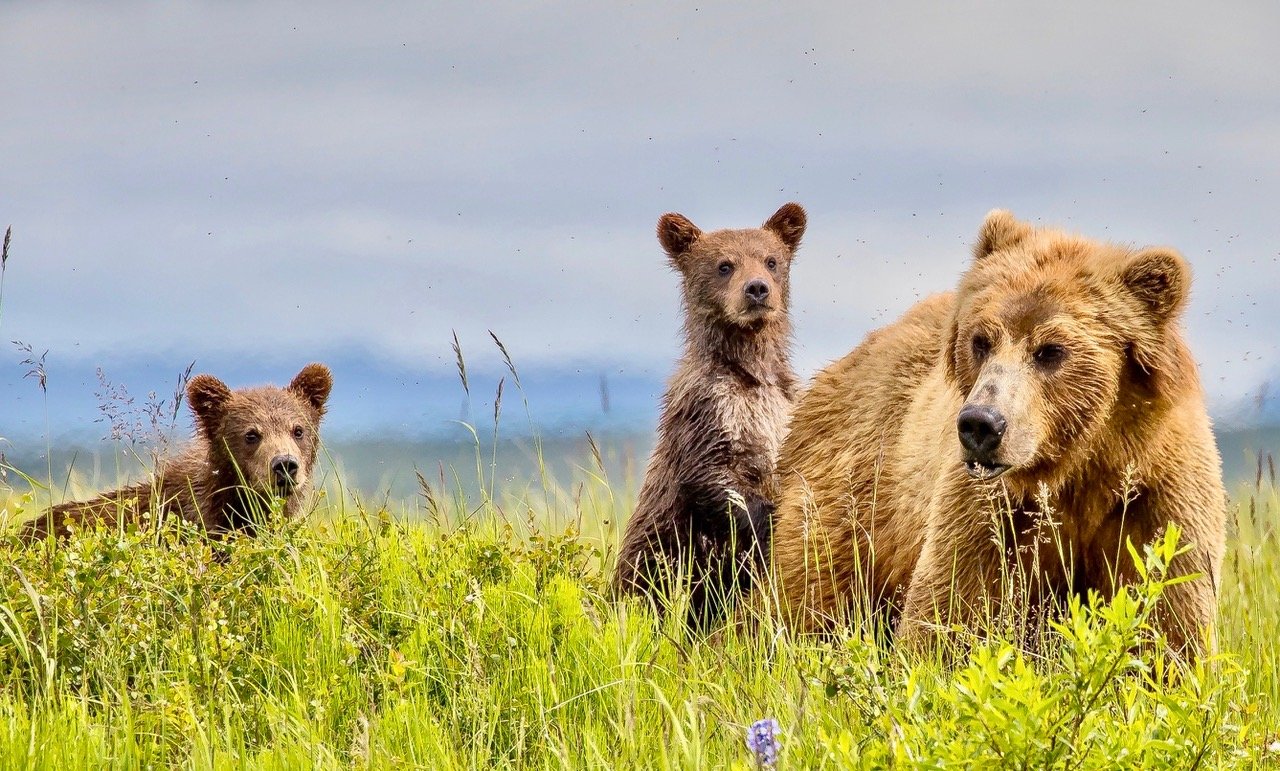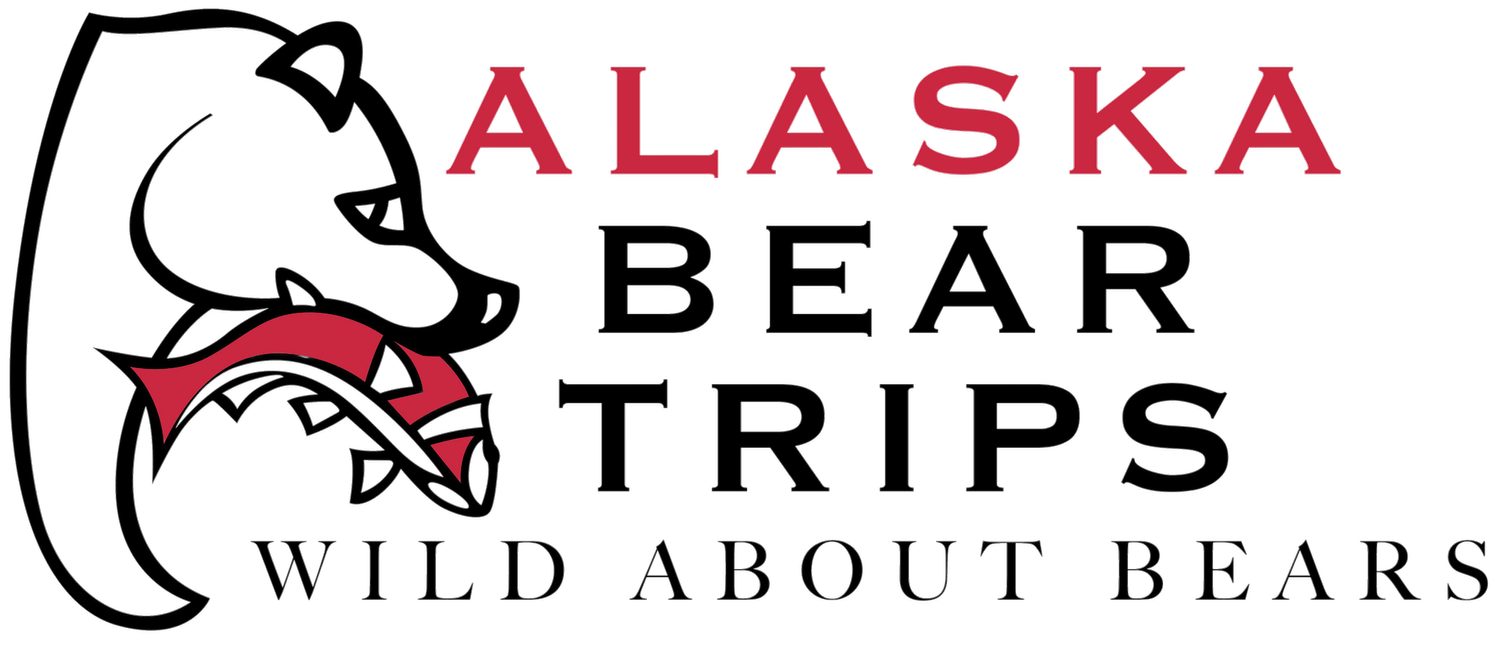
More About Bears
FUN FACTS ABOUT BEARS:
Male Brown Bears weigh about 300 – 850 pounds
Female Brown Bears weigh about 200 – 400 pounds
Bears live an average of 20 – 25 years
Brown Bears can run up to 35 mph
Katmai National Park is home to one of the highest concentration of Brown Bears on Earth
Bears are always looking for something to eat; Bears have only about 6 months to build up fat reserves for winter hibernation & adult females will likely be supporting cubs.
It is both foolish and illegal to feed bears, either on purpose or by leaving food or garbage that attracts them. We all work very hard to not allow the Bears to learn that human food or garbage is an easy meal.
If you find yourself at a crossroads with a Bear: Let the bear know you are human, identify yourself. We generally talk to the bear in a normal voice to help them recognize us as human. Never imitate bear sounds or make a high-pitched squeals.
When a bear cannot tell what you are, it may stand on its hid legs and/or come closer to get a better look or smell. A standing bear is usually curious, not threatening, and you can help them see/smell that you are human while slowly backing out of it’s path, if possible.
We may try to back away slowly diagonally but if the bear follows, we stop and hold our ground. Keep talking to the bear, reminding it you are human. If the bear gets too close, we will raise our voices and be more aggressive. Remember, never imitate bear sounds or make a high-pitched squeals. Let your guide set the tone and follow their lead.
Do not run! No, you can't out run a bear. They have been clocked at speeds of up to 35 mph. Not only that, running will cause the bear to see you as prey and that will trigger a chase response. No one wants this scenario, including the Bear. Avoid it by being aware and prepared.
Be respectful and aware of your surroundings. Be in the moment and respond with awareness. Don’t be looking at your screens, look up and around. Follow your guides’ lead. Your day will be filled with once in a lifetime sights and experiences. Close encounters with wild Brown Bears is very likely. The goal is to come away with a deep respect for the very visual, wild-life-cycle that underlies why we are all converging at Brooks Falls in Katmai National Park. It is a very special place.
BEAR BEHAVIOR IS IMPORTANT TO BE AWARE OF, especially when visiting their environment.
Upon arrival at Brooks, your pilot and guide will give you a short orientation about Bears and the area before leading you to the Brooks Falls National Park Visitor Center. All visitors to Brooks Camp are required to begin their visit by attending a brief bear safety talk outlining park regulations.
The Brown Bears you will see are wild animals. We are very lucky that they tolerate us in their incredible space. We respect that they are the landlords, this is their environment and we follow the ‘rules’.
Stay with your Guide and group.
Bears do not like surprises; When you are walking/hiking through bear country it’s good to make your presence known, especially where vegetation makes it hard to see. Avoid thick brush areas. Stay with your guide/group. Make noise, sing, talk loudly. Groups are noisier and are easier for bears to detect and avoid. If you can, try to walk with the wind at your back so your scent will warn bears of your presence.
Contrary to popular belief, bears can see almost as well as people. However, they trust their noses much more than their eyes or ears. Always let bears know you are there.
Don't crowd any Bears; Give bears lots of room. Some bears are more tolerant than others, but every bear has a personal space zone, which is the distance within which a bear feels threatened. If you go within that ‘zone’, a bear may react aggressively.
Note to Photographers: Use long lenses when photographing bears. Getting close for a great shot is the easiest way to put yourself inside the danger zone. Our advice is to have two cameras; One smaller for video and wider shots, and one with a longer lens (or two). This saves both time and hassle of changing lenses and getting distracted in Bear country.



